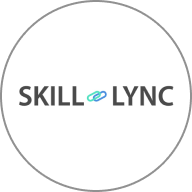Modified on
20 Feb 2025 01:54 pm
Road Modeling and Vehicle Motion in Multibody Dynamics

Skill-Lync
Welcome to the Multibody Dynamics for Automotive Applications using MotionView and MotionSolve blog series. In this chapter, we take our vehicle dynamics simulation further by introducing a road system and defining tire contact forces. This is a crucial step in automotive simulation software, ensuring the vehicle interacts with the road realistically.
Importing the Road and Contact System
To create a realistic driving environment, we import a road system that includes:
A 3D road surface (not just a 2D plane, as contact simulation requires depth).
Four contact entities for each wheel:
- Front-left wheel contact.
- Front-right wheel contact.
- Rear-left wheel contact.
- Rear-right wheel contact.
This setup ensures accurate tire-road interaction, which is essential for automotive dynamics analysis.
Driving the Vehicle on a Road
Now that the steering system and road are in place, the next step is to propel the vehicle forward with an initial velocity.
Steps to Define Vehicle Motion
- Deactivate rear-wheel steering motion (since most cars have front-wheel steering).
- Deactivate the fixed joint on the vehicle body (to allow movement).
Set an initial velocity in the X-direction:
- Assign -10,000 mm/sec to ensure motion in the correct direction.
- Change the simulation type to "Static + Transient".
- Run the simulation and analyze results in HyperView.
Once executed, the vehicle starts moving, demonstrating the effect of multibody dynamics for automotive applications.
Analyzing the Vehicle’s Behavior
During simulation playback, we observe:
- The steering wheel turns as expected.
- The vehicle moves forward, interacting with the road surface.
- The vehicle slightly wobbles left and right, indicating realistic tire-road interaction.
At the end of the road, the vehicle falls off due to gravity—indicating that the simulation is working correctly.
Preventing the Vehicle from Falling Off
To prevent the vehicle from falling:
- Reduce the simulation time to 3 seconds, or
- Disable gravity in the simulation settings.
This ensures the vehicle remains on the road, allowing further testing and analysis.
Conclusion
By integrating road modeling and tire contact forces, we complete a realistic automotive simulation where the vehicle interacts dynamically with its environment. These steps are fundamental for automotive engineering simulation, particularly in multibody dynamics training and certification courses.
This marks the completion of our MotionView crash course on multibody dynamics using MotionSolve. If you're interested in diving deeper, consider enrolling in a MotionView certification course or a multibody dynamics online course with certificate.
Thank you for following along—happy modeling!
This blog is part of our ongoing Multibody Dynamics blog series. If you missed the previous posts, check them out here.
Would you like to have a more interactive experience going through the Multibody Dynamics?
Skill-Lync has released a FREE comprehensive course covering Multibody Dynamics for Automotive Applications using Motionview and Motionsolve in detail! Check it out here.
If you’re looking to go deeper into Multibody Dynamics check out Skill-Lync’s Multibody Dynamics Course.
Check out our hands-on course today and add Multibody Dynamics to your list of skills!
Let’s get #IndustryReady together, one skill at a time!
Author
Uma Maheswari K
Author

Skill-Lync
Subscribe to Our Free Newsletter

Continue Reading
Related Blogs
Explore the fundamentals of vehicle dynamics and ultimate trends in the field from design and modeling to control with Skill Lync's exclusive course on the subject. Read about how Skill-Lync's CAE courses can help you get employed.
29 Jul 2020
In this article, we will briefly discuss the working, applications, and features of the one-dimensional systematic simulation tool, GT-Power, in Emission Control Strategy, engine calibration, hybrid vehicle modeling. Read about how Skill-Lync's CAE courses can help you get employed.
29 Jul 2020
This article offers a brief introduction to the globally accepted standard of Geometric Dimensioning and Tolerancing, and its importance for the entire manufacturing process. Read about how Skill-Lync's CAE courses can help you get employed.
29 Jul 2020
In this blog we will read about Going a step into Biomechanics and how Skill-Lync's CAE course will help you get employed.
10 May 2020
The powertrain is the most prominent source of vibrations that affects the driving experience for the people on board. This blog from Skill-Lync examines these vibrations to help enhance that experience.
22 Aug 2020
Author

Skill-Lync
Subscribe to Our Free Newsletter

Continue Reading
Related Blogs
Explore the fundamentals of vehicle dynamics and ultimate trends in the field from design and modeling to control with Skill Lync's exclusive course on the subject. Read about how Skill-Lync's CAE courses can help you get employed.
29 Jul 2020
In this article, we will briefly discuss the working, applications, and features of the one-dimensional systematic simulation tool, GT-Power, in Emission Control Strategy, engine calibration, hybrid vehicle modeling. Read about how Skill-Lync's CAE courses can help you get employed.
29 Jul 2020
This article offers a brief introduction to the globally accepted standard of Geometric Dimensioning and Tolerancing, and its importance for the entire manufacturing process. Read about how Skill-Lync's CAE courses can help you get employed.
29 Jul 2020
In this blog we will read about Going a step into Biomechanics and how Skill-Lync's CAE course will help you get employed.
10 May 2020
The powertrain is the most prominent source of vibrations that affects the driving experience for the people on board. This blog from Skill-Lync examines these vibrations to help enhance that experience.
22 Aug 2020
Related Courses
